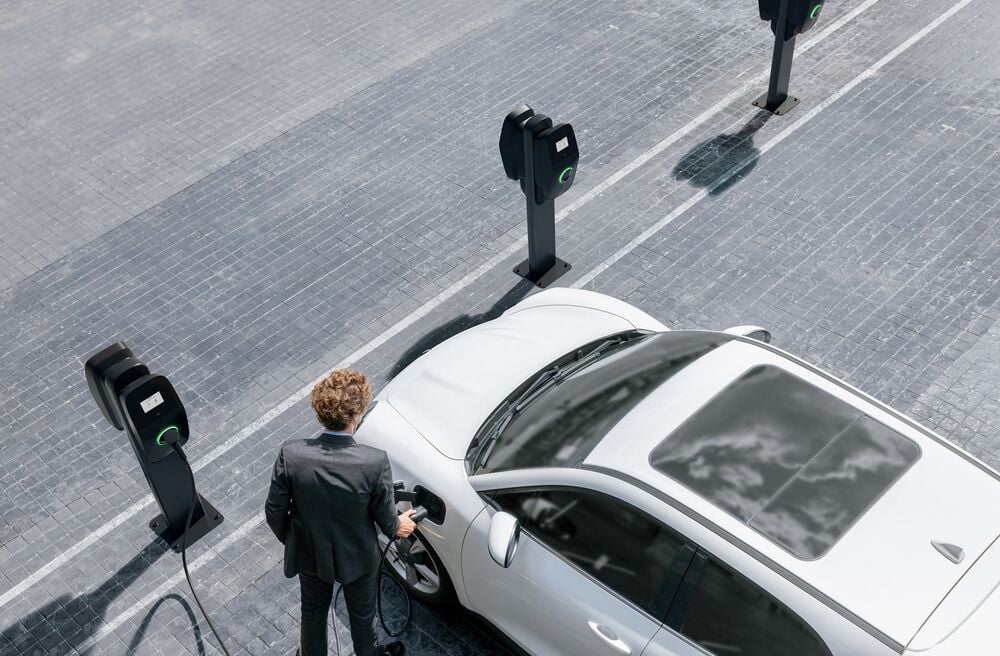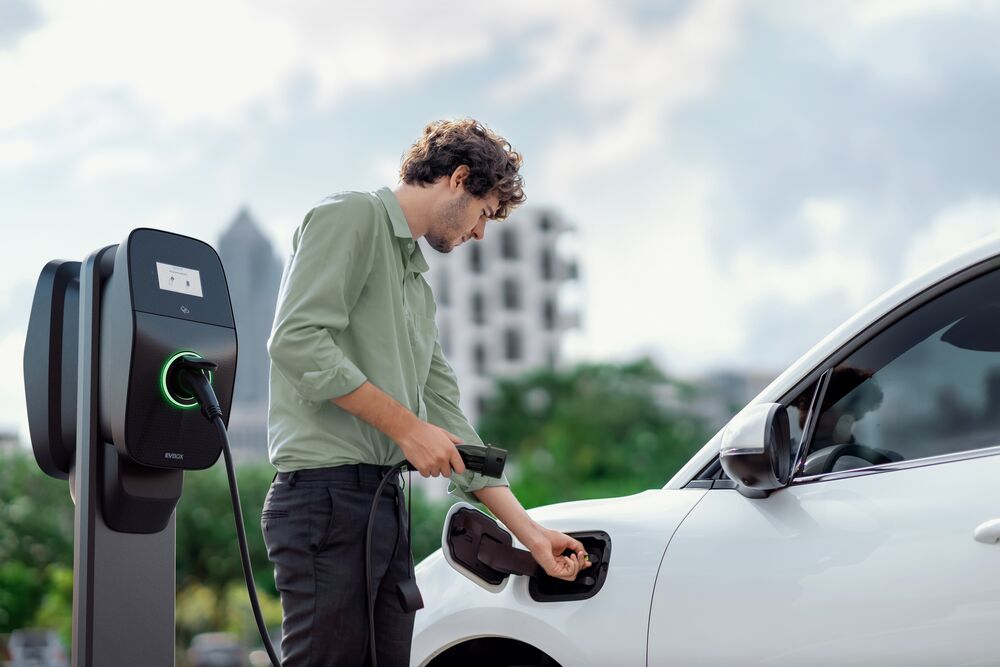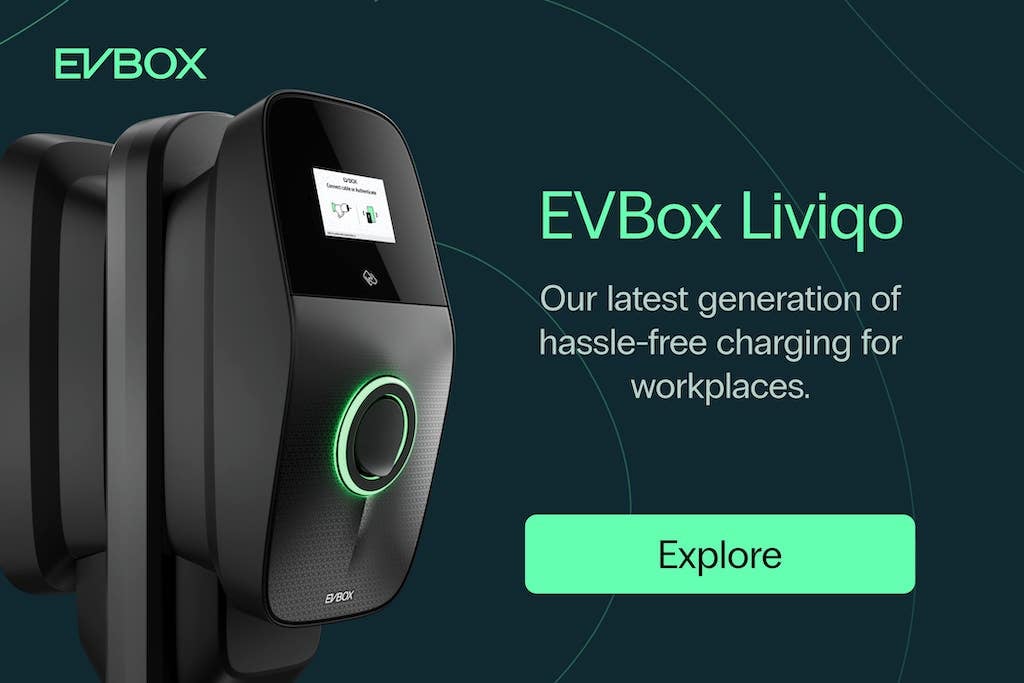
If you’re thinking about investing in EV charging stations for your workplace it might be good to know how your employees think about it, and in doing so, get a clear picture of their wants and needs so that you can make the right decisions and invest in a solution that is the right fit for your organization.
To help you gauge the demand for EV charging stations at your workplace, we identified the 15 must-ask questions your organization should ask your employees.
Download our free employee demand survey template here (no email required).
The takeoff of electric
It’s pretty clear that globally, the future of mobility is electric: sales of electric vehicles (EVs) are breaking records every year, and governments around the world are incentivizing and investing in electric vehicle infrastructure.

Workplaces are not exempt from this trend. As drivers adopt electric cars en masse, more and more of your employees will drive an EV to work, expecting to have charging facilities at their disposal. Our research shows that 34 percent of EV drivers already charge at work, and a further 27 percent would do so if the option were available.
Clearly, there is demand across the board for workplace charging facilities from employees. But, does this rising general demand reflect the demand for EV charging at your workplace?
In this article, we’ll look at some ways you can gauge demand for workplace charging in your organization and explain what role it has to play in the transition to electric mobility.
The role of workplace charging in supporting EV adoption
Before we look at how you can assess demand for EV charging, it’s worth thinking about why you would even want to offer EV charging to employees in the first place.

Beyond showing your commitment to sustainability, offering EV charging to employees provides yet another reason to come to the office and can boost satisfaction. In fact, after the home, the workplace is the most popular charging location for EV drivers.
While EV chargers can be beneficial in many cases, they represent a significant investment, and it’s wise to get an overview of your needs and the interest from your workforce before considering which EV charger is best for your workplace.
How to assess the need for EV charging at your workplace

Analyzing employee commuting habits and EV ownership
The first step in understanding whether EV chargers are worth it for your workplace is considering your employees’ commuting habits.
For one, does your company work fully in-person or hybrid? If the latter, how many times per week do your employees come to the office? If employees tend to work mostly from home, investing in EV charging might not be worth the cost.
Another factor to consider is how many employees you have and how many of those travel to the office by car. One way you can determine this is simply by looking at the size of your company’s parking lot and observing how full it gets on a typical workday.
Alternatively, you might require employees to register for a parking permit if they wish to drive to the office, which can give you an indication of how many people drive in to work.
The last aspect you’ll want to take into account is how many people drive an electric car. While there is no perfect way to measure this, a simple way is to walk around the office parking lot and estimate what proportion of cars there are electric.
A more precise method is to survey your employees, asking if and what car they drive. With enough participation, this can provide accurate insights into your employees’ commuting habits and give an indication of whether workplace charging is worth considering.
Gathering input from employees and stakeholders

While understanding what proportion of your workforce drives an EV today is helpful, it doesn’t paint the whole picture. It’s worth considering your long-term needs and situation to future-proof your organization.
Firstly, EV adoption is still growing, and many people who don’t yet own one might buy an electric car in the next few years.
Even if people would consider buying an electric vehicle, there may be other barriers that prevent them from making the switch. For instance, they might not own a dedicated parking space or live in an apartment building that doesn’t allow them to install an EV charger at home.
In these cases, having the option to charge at the workplace can be the enabling factor that pushes people to switch to electric mobility.
If you’re going to be sending out a survey to your employees, it’s worth ensuring that questions take these nuances into account and capture the whole range of situations and attitudes toward electric mobility.
Do they have an EV or would they consider getting one?
Beyond simply asking employees if they already own an EV or want to buy one, it’s worth highlighting the whole electric vehicle landscape to really understand their purchase intentions. For example, you might want to emphasize trends in EV sales, new models releasing soon, the environmental impact of EVs, or upcoming combustion engine bans by governments.

There might be confusion surrounding EV charging for employees unfamiliar with electric mobility, so it’s worth explaining the basics – how long it takes, how often you need to charge, or how you use a charging station.
Commute distance
A crucial factor that determines how feasible EVs are for an employee is the range of their commute. While nowadays, even the cheapest EVs come with plenty of range, employees with particularly long commutes may be less comfortable buying an electric car if they can’t get to work and back without topping up.
Consider as well that if your entire workforce has fairly long commutes, you might have to install more charging stations to ensure you meet the demand.
Work pattern
Besides commuting distance, you also want to consider how your employees work and how much time they spend at the office. Do they predominantly have predictable 8-hour workdays? Or do they come and go throughout the day?
If the latter, cars will have less time to charge, and you might want to consider installing DC fast chargers to ensure employees can quickly top-up their EV’s battery.

Would they want to have chargers
It might sound obvious, but perhaps the easiest way to get a sense of employee sentiment around EV charging is to ask directly. Besides giving you an indication of demand for chargers, this can also highlight employee attitudes towards sustainability and corporate responsibility.
Research shows that a company’s environmental record is vital for attracting and retaining employees. Gallup found that 71 percent of workers consider a company’s environmental record when deciding on an employer, and a Deloitte report shows that employees satisfied with their employers’ societal and environmental impact are more likely to stay with the company for more than five years.
How much are they willing to pay for charging (if anything)
While asking employees how much they are willing to pay for EV charging at work might sound counterintuitive, the reality is that EV charging comes at a cost that employees would have to pay if they charged at home or on-the-go.
Even if most people would prefer to have free charging at their disposal, asking employees about their willingness to pay can give you a good indication of their price sensitivity, and helps you understand how much demand there is for EV charging at different price levels – and as such, whether the investment would be worth it.
Is it possible for them to install a home charger?
Sometimes, you might find that the demand for EV charging among employees is so large that you can’t feasibly install enough chargers to meet everyone’s needs. Alternatively, your workplace’s electrical connection to the grid might not have the capacity to handle the added load from multiple EV chargers without needing an upgrade.
In these cases, it might be more practical to help employees install EV chargers at their homes instead, for example by subsidizing the charging station’s cost of purchase or installation.
The end outcome remains similar, helping meet employees’ charging needs and showcasing your commitment to sustainability, but without the logistical impact of installing EV charging at the office. In the long run, you might actually find this solution to be cheaper, as there is no recurring cost to your company from the chargers’ electricity use.
Opportunities with EV charging for the workplace
Electric mobility can be an important tool for supporting your company’s sustainability goals and reducing its carbon footprint. But before rushing to install EV chargers at your workplace, it’s essential to understand the scale of the demand for EV charging from employees.
Of course, every situation is different, and your company may not exclusively cater to employees, instead hosting visitors, clients, guests, and members of the public. In these cases, EV charging can be a revenue generating tool and put your business on the map. Have a look at our detailed article for an overview of the different business models around workplace EV charging.
If you’re looking to leverage electric car charging for your workplace, have a look at our website to discover more about workplace EV charging and our charging stations.
Related articles

EV charging load management and the importance of cluster load balancing
Electric vehicle (EV) charging stations can add a substantial load onto your building’s power supply, often requiring...

How to install EV chargers at the workplace?
Regardless of the type or model of charger you choose (or how much one costs), installing EV charging stations is...

What do workplace EV chargers cost?
On average, AC workplace EV chargers tend to cost around €1,300 per charge port (excluding installation costs)....

